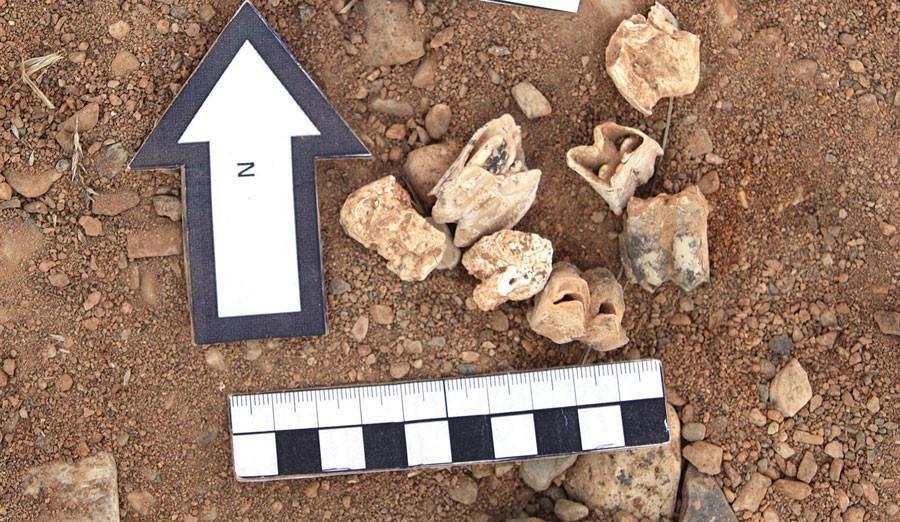
A treasure trove of over a dozen fossils of animals, which lived 2 to 9 million years ago, has been found in southwestern Turkey, according to researchers.
Turkey’s Anatolia, lying at the crossroads of Europe, Asia, and the Middle East, is the final resting place of many fossils of humans and animals that lived through the millennia, Ahmet İhsan Aytek, an anthropologist at Mehmet Akif Ersoy University in the southwestern Burdur province, told the state-run Anadolu Agency.
Aytek leads a 14-person team including paleontologists and geologists that started exploring the area in the province of Denizli last year.
“This year we had a very productive season. We found fossil remains belonging to 14 different animals in Denizli,” Aytek said, adding that the findings are important for shedding light on the history of the region.
He said the fossils can be broken down to two different eras, first of which is the Miocene Epoch (between 5 and 23 million years ago).
The findings included two different giraffes, more massive than today’s but lacking the modern long neck, two different rhinos similar to today’s specimens, two different early horses, two different hyenas, one of them larger than the current species, and an elephant fossil morphologically similar to modern-day hippos.
The three other fossils belonged to horned animals, two similar to modern antelopes, and a third as yet unclassified, Aytek said.
“If we look at the life cycle of these fossils, we see that they lived 9 to 7 million years ago,” he added.
In 2002, geologist and excavator Cihat Alçiçek found the first early human Homo Erectus fossil in Turkey, which dates back some 1.2 million years, paving the way for today’s findings, he noted.
Aytek said the second era was the Pleistocene — 2.6 million years ago, when the last of the five documented ice ages occurred — and they found a horse and fox fossils dating from that time.
“The fox fossil especially has great importance as one of the oldest found in Anatolia. When we look at the time period of these fossils, we see that they were animals living around 2 million years ago,” he said.
“With these findings, I hope that we can get new insights into the history of human settlements in Anatolia.”
Life traces of dinosaurs
Aytek said the studies related to fossils were being prepared for publication under the leadership of Serdar Mayda, a paleontologist at Ege University Museum of Natural History.
“We will continue to work in more detail in 2019. We have extended our time. We made an application to the Culture and Tourism Ministry for the period of 2019. We plan to visit all sediments in the last 65 million years. The history we call 65 million years is the time when dinosaurs were erased from history. Therefore, we will investigate the traces of dinosaurs in Denizli in surface survey in 2019. We will look for the traces of dinosaurs on a periodic basis,” he said.